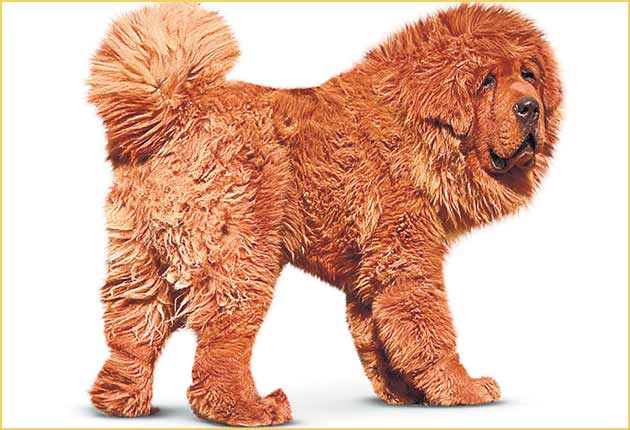The assembled ranks of the press shook their heads in disbelief when, in 1979, Trevor Francis was revealed as the first £1m footballer. Now, someone has paid almost that sum for a red Tibetan mastiff.
Big Splash, or Hong Dong in Chinese, has been sold for 10million Chinese yuan, some £945,000. But while Francis scored the winning goal for Nottingham Forest and his new master, Brian Clough, in the European Cup final three months later, Hong Dong's practical uses are decidedly limited.
So why so much money? For the same reason that a caffe latte costs a lot more than it used to, that last year 33 Chilean miners returned to a shut down mine, and that a vase sold for £53m in an auction in Ruislip, West London. Be it milk, copper, works of art or pedigree dogs, if the Chinese want something, they get it, whatever the price. "The Tibetan Mastiff in the UK will traditionally sell for £600 to £1,000," explained Bill Lambert of the Kennel Club. "The high price is a reflection of how the breed has become a fashionable and revered status symbol in China. Prices will similarly rise amongst certain breeds in the UK when they are perceived to be fashionable, but never to this extent."
For Hong Dong's new owner, the outlay doesn't stop with the transfer fee. There will be the wage demands too – enough chicken and beef to fill a growing 180lb dog, as well as Chinese delicacies such as sea cucumber and abalone (sea snails).
The breeder, Liu Bang, insists the 11-month old dog – a "perfect specimen" – is worth the money. "We have spent a lot of money raising this dog, and we have the salaries of plenty of staff to pay," he said.
Some of the considerable outlay may, however, be recouped. The new owner may be able to charge up to £10,000 a time for the dog to breed with a female. Hong Dong will likely live to around 14. He will need to accumulate a mere 100 sexual partners in that time to break even, unlikely to be a problem when you are the most expensive transfer of the canine world.
The breed, once native to the Tibetan plains, has become something of a status symbol in China, whose new class of super rich will stop at nothing to show off their wealth. As a result, it has become intensely fashionable – in the past few years the price of a Tibetan Mastiff puppy has rocketed from only a few hundred pounds.
It is the colour more than anything that has secured the astronomic price tag as it is considered lucky by the Chinese. The more common Tibetan Mastiff is black and brown. Even so, only around 300 of any colour are born in the UK each year, making it among the rarer breeds.
Classical references show the ancient breed to have been highly prized by Assyrians, Persians, Greeks, Romans, Huns, and Mongols, accompanying them on war expeditions. Genghis Khan is thought to have brought 30,000 of them with him on his quest to conquer Western Europe.
When Marco Polo encountered what are now thought to have been Tibetan Mastiffs in the 13th century, he described them as "tall as a donkey with a voice as powerful as that of a lion". Britain's Queen Victoria and King George IV also kept them.
But for the owner of the world's most expensive dog, the Kennel Club's Mr Lambert had some words of warning. "The breed is independently minded, aloof and protective and while good for some people, it would not be a good fit for many other lifestyles," he said. "We urge people to buy a dog based on how suitable it is for them, rather than basing their decision on the latest fashion and trends."
Tibetans believe the dogs have the souls of monks and nuns who were not good enough to be reincarnated as humans or enter the heavenly realm of Shambhala. At 20 stone and with a street value of a million quid, their reincarnations may not make it – through the eye of a needle, in any case – into the kingdom of heaven either.
His size
Tibetan mastiffs are by nature guard dogs, growing to more than 20 stone. Yet their shaggy, furry coats make them appear even larger. Hong Dong is just 11 months old. Fully grown he is likely to be enormous.
His coat
The Tibetan mastiff is more commonly black and gold. The Chinese revere the colour red, especially when it is as resplendent as in Hong Dong's glorious fur.
His very existence
Tibetan mastiffs are rare. Red ones even more so. When the super-rich Chinese want a scarce commodity, the price rockets. Hong Dong is also a boy. Aspiring breeders will have to pay around £10,000 for a one-night stand with him.

Join our commenting forum
Join thought-provoking conversations, follow other Independent readers and see their replies
Comments